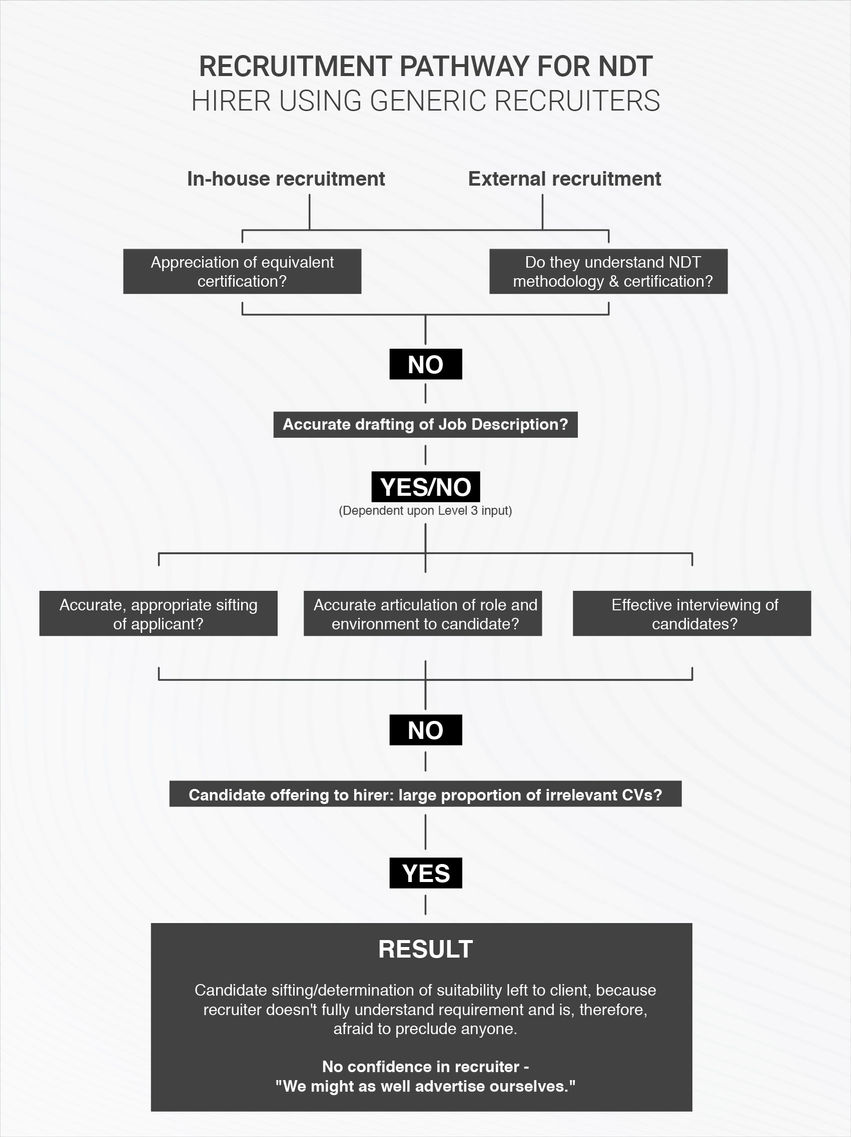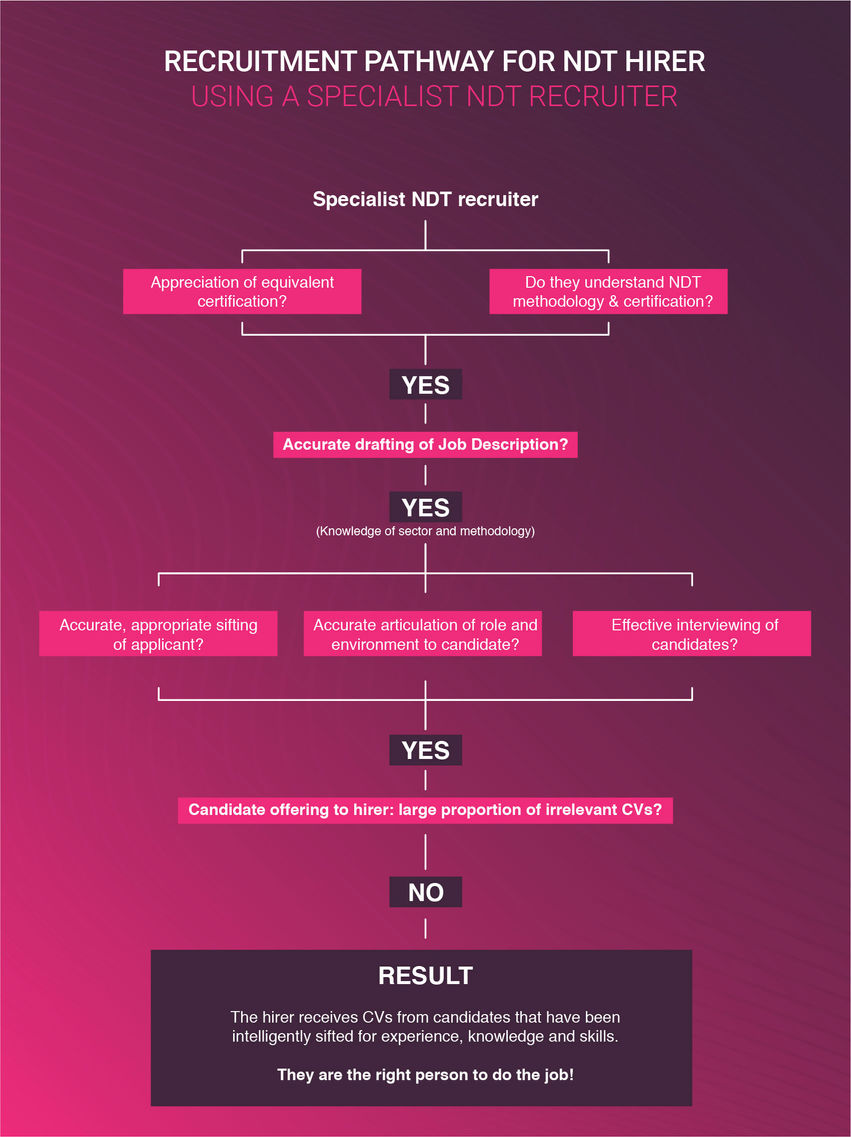NDT Recruiter or General Recruiter - Which One Should I Choose?
The process of appointing a new Non-Destructive Testing (NDT) Technician can be incredibly complex and time-consuming. For certain roles and locations, it can take companies months, even years, to find the right NDT candidate, reducing their outputs and putting added stress on their existing workforce in the process.
It's not uncommon for an NDT hirer to appoint a general recruiter, normally within the engineering sector, to fill their post.
However, while this may seem like the usual option, it's not the most effective one
Limited or non-existent knowledge of NDT among general recruiters means there's often a disconnect between employers' needs and the recruiter's understanding of what's required. This, in turn, can lead to employers being presented with candidates who simply aren't right for the role.
We're not just saying this. We know this because we've seen the consequences countless times; NDT roles staying vacant for months on end, with managers sifting through piles of irrelevant CVs, including those from people who aren't eligible to live in the country where the job's located.
Plus, general recruiters waste time interviewing candidates who don't fulfil the required criteria to competently carry out such a highly skilled role. Or they may miss the candidates who are suitably qualified (by having the required training hours and experience), but don't have the specific certification that's required. The whole process looks a lot like this:

And this is how the NDT recruiter process looks…

Generic approaches deliver generic results, which is far from what's required when recruiting for such a specialised role as an NDT technician
It's not what's delivered when working with a proven NDT recruiter, like NDT Resources, who, unlike general recruiters, and many other NDT recruiters, have knowledge and practical experience of:
● NDT methodology – for instance, Paul Morgan, NDT Resources' Technical Director, has had hands-on experience of utilising all of the major methods (UT, ET, RT, MT, PT and VT). He first got into the world of NDT in 1999, whilst serving in the Royal Air Force and since leaving has worked in the power generation, nuclear, Formula 1 and (of course) aerospace sectors. Can a general recruiter explain the difference between Computed Radiography and Direct Digital Radiography? Paul can.
● NDT certification regimes and potential compatibility – such as ASNT (employer-based and central certification), PCN, EN ISO 9712, EN 4179 and NAS-410
● Industrial sector requirements and work environments - e.g. certification to satisfy health and safety requirements, such as off-shore working, or the safety issues concerned with working on ‘live' aircraft.
Very few people, only Level 3s, hold all of the insight and knowledge of what's required to fulfil these positions. They, after all, are the only ones who can give the technician authority to work (in accordance with a company's written practice). That's why NDT Resources always seeks to talk to them as part of the recruitment process.
A case in point
A candidate has the PCN Level 2 Ultrasonics (UT) certification and experience of testing welds that use a shear wave UT technique.
The NDT manager wants somebody who can test composite parts that use compressional wave techniques. The shear wave technique is more complex to use and interpret, so the candidate will most probably find the compressional waves technique really easy in comparison. As a result, they look suitable for the role.
However, there's another, equally important factor to consider here, material technology. The job requires somebody who knows how the composite parts are manufactured and what associated faults may lie within. Somebody who has worked on metallic welds wouldn't necessarily have this knowledge.
Hiring the right NDT candidate doesn't just simply involve making sure they have the right certification, but also the appropriate materials technology knowledge, which is a must in understanding the indications that arise from NDT applications. Unless you've worked within the field, there's no way you can possibly know about these (and other) wider requirements.
It's often said that the world of NDT is a black art
It is to most, if not all, general recruiters, as well as those who work alongside NDT technicians. However, it's not impossible to crack the code, not when you work with a specialist recruiter that speaks the language and has lived and breathed NDT for over 20 years.